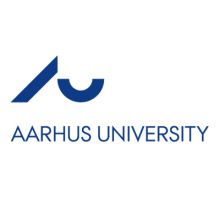Is co-authorship of academic papers out of control?
With one physics paper published this year by the team at the Large Hadron Collider at the European Organisation for Nuclear Research (Cern) listing 5,154 researchers, and with hundreds of articles now citing at least 1,000 authors, some scholars have started to ask if this ever-expanding approach to credit is rendering the concept of academic authorship meaningless.
“We’re seeing things that might have, at one point, just been a thank you at the end of the paper [become], hey, could you put my name on this paper as an author?”, Zen Faulkes, a neuroethologist at the University of Texas Rio Grande Valley who writes on the ethics of research publication, said in a recent National Public Radio interview in the US.
A new research paper on the genetic make-up of a fruit fly, which credited 1,014 authors, was a good example of how the idea of publication in peer-reviewed journals has been cheapened by mass authorship, he adds in his blog NeuroDojo.
Some 900 authors listed on the paper were undergraduates who helped to edit draft genome sequences as part of a training exercise, writes Professor Faulkes, who has coined the phrase “kilo-author” to describe the phenomenon.
When promotions, pay rises and prestige can flow from being listed on highly cited papers, the rise in mass shared authorship essentially cheats those for whom publication is painstaking and hard won, he explains.
Of course, the nature of modern scientific research means that researchers are increasingly likely to operate in large, often multinational, teams, where it is difficult to assign the appropriate level of credit for work published.
Instead, co-authors are listed alphabetically, which meant that for the paper by the Switzerland-based team at the LHC, 24 of its 33 pages were devoted to listing the thousands of authors who had contributed to the work.
This proliferation of named authors may also help to explain the seemingly incredible productivity of some researchers.
According to a paper published in the journal PeerJ this month, 24 medical researchers published at the rate of more than one article every 10 working days – over 25 a year on average – between 2008 and 2012.
Universities should be wary of these “over-prolific authors” and should ask researchers to justify their authorship to show that they take research integrity seriously, recommends the paper, “Too much of a good thing? An observational study of prolific authors”, by researchers at consultants Sideview.
However, it seems that the academy is already growing wise to the nature of these mass-authored papers.
This year, for the first time, the Times Higher Education World University Rankings will exclude any papers that have more than 1,000 authors, as they are considered to be “so freakish that they have the potential to distort the global scientific landscape”.
A non-scientific problem too?
But is the rise in shared authorship also common in non-scientific subjects?
An analysis of social science papers published between 1980 and 2013 suggests that there has been a marked rise in co-authorship, which grew by 40 per cent or more in 20 of 56 subject categories over the 33-year period.
While they are not yet in “kilo-author” territory, fields such as psychiatry, health policy and biomedical social sciences have seen the mean average number of authors double over the period, according to the paper by Dorte Henriksen, which is due to be published shortly in Scientometrics.
This shift may reflect the nature of these subjects changing over time, said Ms Henriksen, a PhD student at Aarhus University’s School of Business and Social Sciences. Research in some subjects is more likely to be interdisciplinary, with more work taking place in larger research teams able to undertake large-scale statistical analysis, she said.
But the rising numbers of PhD students and subsequent collaborations with supervisors could also explain the trend, she added.
“Gift authorship” is another reason that might also explain the increase in authors per paper, with senior scholars seeking accreditation for work in which they were only minimally involved, Ms Henriksen said.
Tara Brabazon, professor of education and head of the School of Teacher Education at Charles Sturt University in Australia, believes this “toxic” practice – which she described as “byline banditry” – is “common, invisible and sanctioned through either regulatory neglect or intent”.
PhD supervision is the “breeding ground” for this “complicit siphoning of work written by a disempowered student or colleague into the résumé of a senior scholar”, which amounts to “institutional plagiarism”, said Professor Brabazon.
“The most debilitating example I have ever seen involved a ‘supervisor’ telling me that she had not read the latest chapter from her postgraduate,” she recounted. “When I asked why, she responded that, ‘I am waiting for the student to tell me whether or not my name will be listed as an author.’
“The supervisor in question added: ‘If I am listed as author, then I’ll read it, but if I am not, then I won’t bother,’” Professor Brabazon explained.
In this case, “intellectual generosity, mentoring or assisting the next generation of students were not sufficient motivation to open the file and complete her job”, she added.
“Her incentive was authorship and credit for a piece she had not written.”
Breaching the rules
Such practices, along with mass authorship, would seem to breach the so-called Vancouver rules on authorship, agreed by the International Committee of Medical Journal Editors but accepted more widely across academia, which state that an “author should be able to identify which co-authors are responsible for specific other parts of the work”.
Despite the growing scepticism about multiple authors, such tales of potential abuse should not be used to deter academic collaboration and co-authorship, said one scholar.
“People do not co-author because they want to get a free ride,” said Stephen Mumford, professor of metaphysics and executive dean of the Faculty of Arts at the University of Nottingham, who has written of the importance of academic collaboration in the arts and humanities.
“If anything, co-authors are battling to get their own ideas into the paper,” he said.
The negotiations involved in co-authorship are often as time-consuming as simply writing a paper as a sole author, he added.
Fractionalising the credit awarded to researchers according to the number of co-authors – an approach advocated by some – would be “dangerous” and “overly mechanical”, he believed.
“We do not co-author because it’s half the work, but because the end product is twice as good,” he said.
POSTSCRIPT:
Print headline: Crowd control: the rise of the ‘kilo-authors’
Register to continue
Why register?
- Registration is free and only takes a moment
- Once registered, you can read 3 articles a month
- Sign up for our newsletter
Subscribe
Or subscribe for unlimited access to:
- Unlimited access to news, views, insights & reviews
- Digital editions
- Digital access to THE’s university and college rankings analysis
Already registered or a current subscriber? Login






